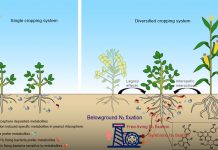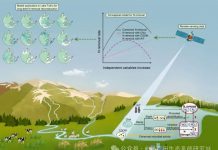Chaopu Ti Jianjun Pan Yongqiu Xia Xiaoyuan Yan. A nitrogen budget of mainland China with spatial and temporal variation. Biogeochemistry 2012 108:381–394.
Abstract
The present study evaluated nitrogen (N) input and output in mainland China using updated data of temporally and spatially-based land use maps and statistical data at national and provincial scales. The total N inputs increased from 3081 kg km-2 in 1985 to 5426 kg km-2 in 2007. Chemical fertilizer dominated the N input and showed an increasing trend. Biological N fixation was the second important N input till 1990 and atmospheric deposition became the second most important source after that accounting for 24.0% in 2007. There was no net N input through food-feed import in 1985 but it accounted for 3.5% of the total N input in 2007. According to a mass balance model we assumed total N input equal to output. The results showed that more than half of the total N was denitrified or stored in the system. Ammonia volatilization accounted for 18.9–22.9% of the total N input and N export to water bodies accounted for 17.9–20.7%. About 5.1–7.7% of the N input was emitted to the atmosphere through biomass burning. When calculated per unit area total N input N export to water bodies denitrification and storage could be very well explained by human population density. Nitrogen input and major outputs were also positively related to per capita gross domestic product and the percentage of total land area used as cropland. The N budget is compared to that of some other countries and the environmental impacts of the N cycle is discussed.







